Abstract
The initial step in the degradation pathways of proline and hydroxyproline is catalyzed by proline oxidase and hydroxyproline oxidase, yielding delta 1-pyrroline-5-carboxylate and delta 1-pyrroline-3-hydroxy-5-carboxylate, respectively. The second step is the oxidation of delta 1-pyrroline-5-carboxylate to glutamate and delta 1-pyrroline-3-hydroxy-5-carboxylate to gamma-hydroxy-glutamate. To determine if this second step in the degradation of proline and hydroxyproline is catalyzed by a common or by separate enzyme(s), we developed a radioisotopic assay for delta 1-pyrroline-3-hydroxy-5-carboxylate dehydrogenase activity. We then compared delta1-pyrroline-3-hydroxy-5-carboxylate dehydrogenase activity with that of delta 1-pyrroline-5-carboxylate dehydrogenase in fibroblasts and leukocytes from type II hyperprolinemia patients, heterozygotes, and controls. We found that cells from type II hyperprolinemia patients were deficient in both dehydrogenase activities. Furthermore, these activities were highly correlated over the range found in the normals, heterozygotes, and patients. We conclude from these data that a common delta 1-pyrroline-5-carboxylate dehydrogenase catalyzes the oxidation of both delta 1-pyrroline-5-carboxylate and delta 1-pyrroline-3-hydroxy-5-carboxylate, and that this activity is deficient in type II hyperprolinemia.
Full text
PDF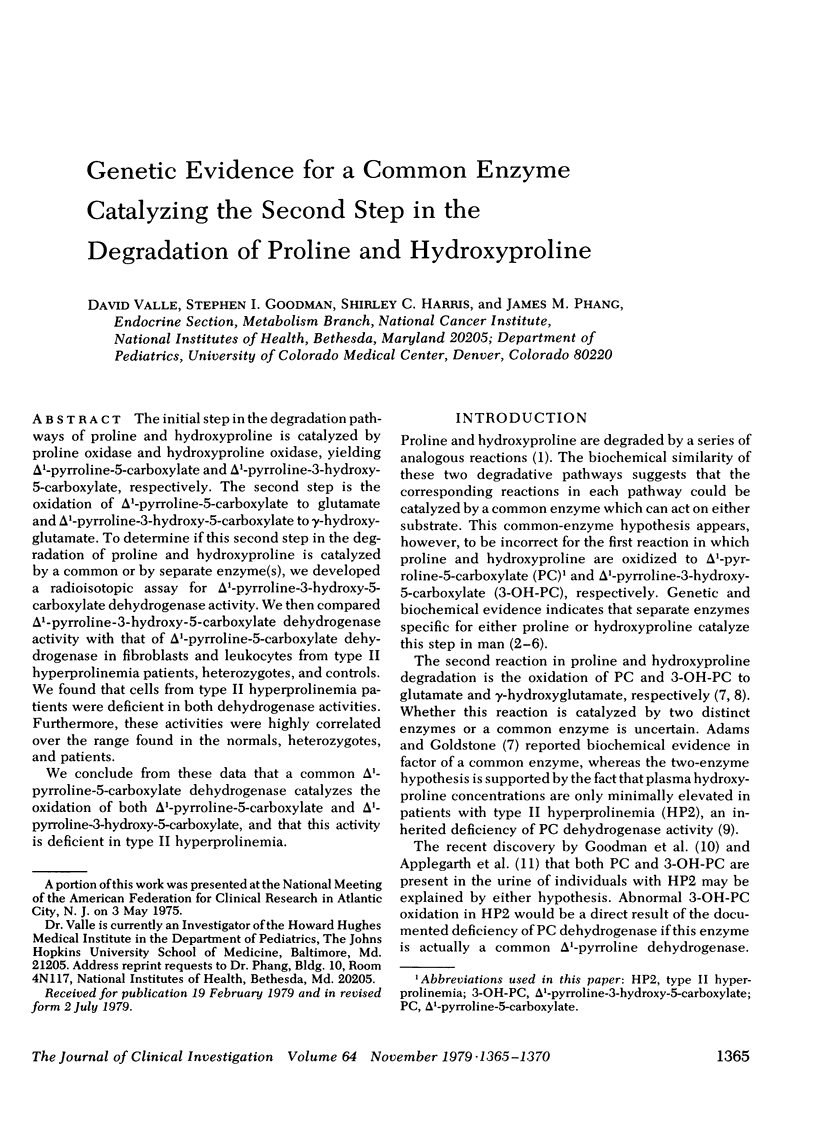
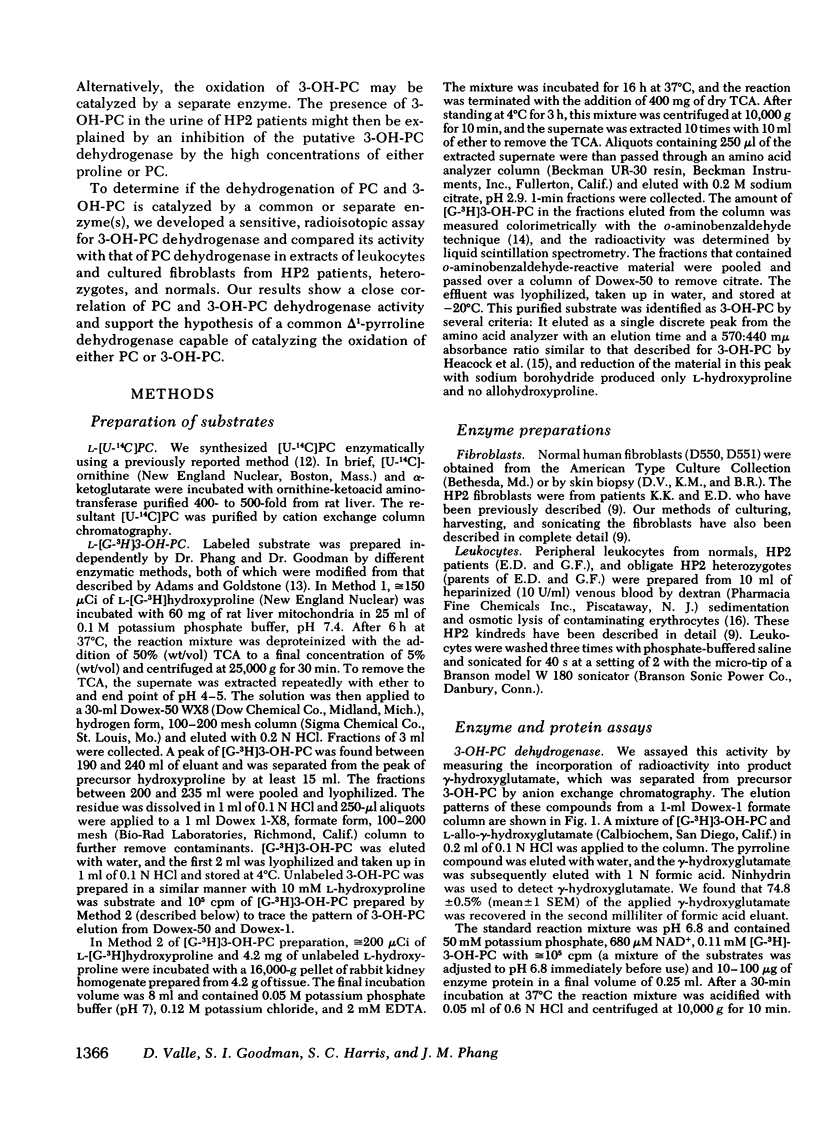
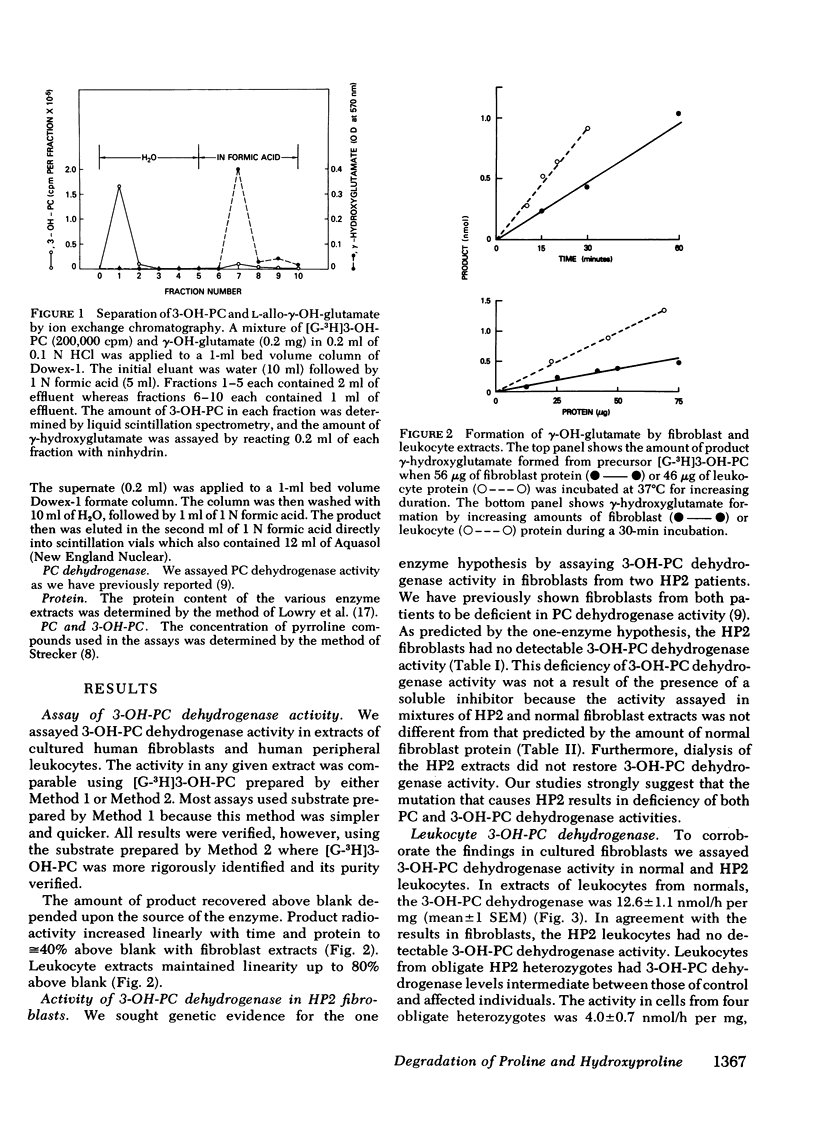
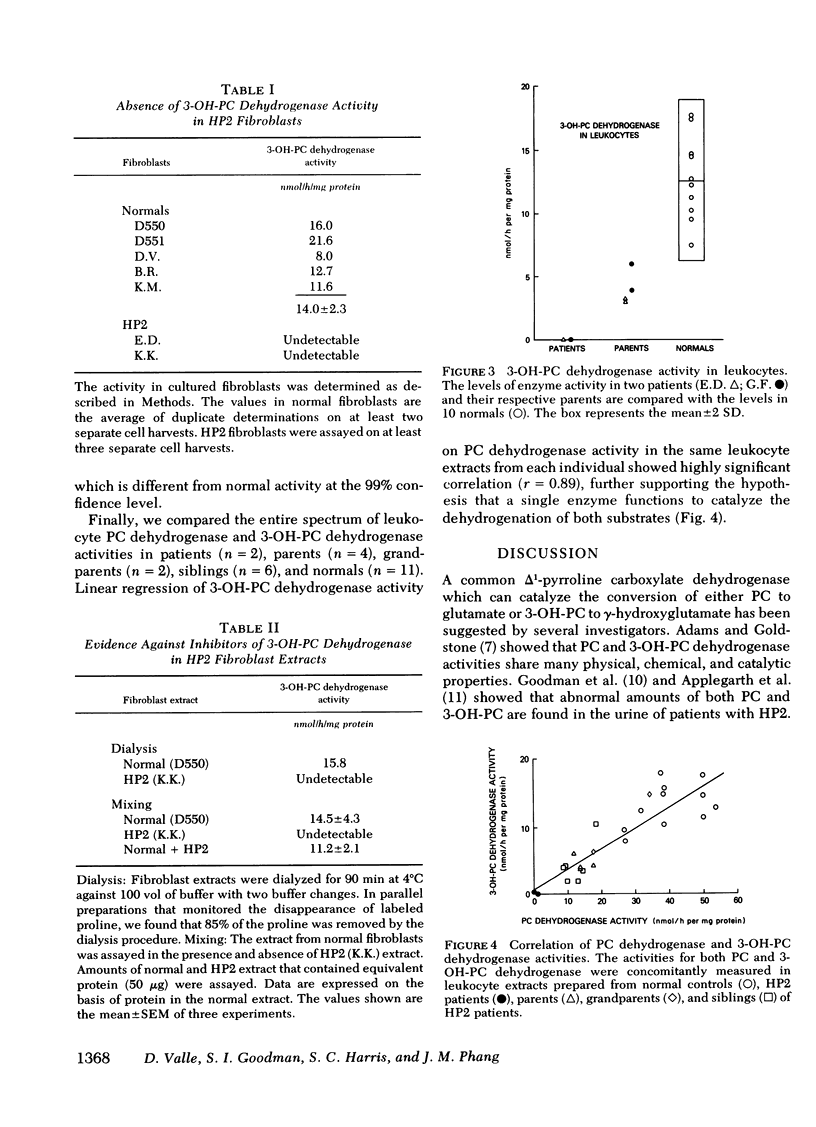
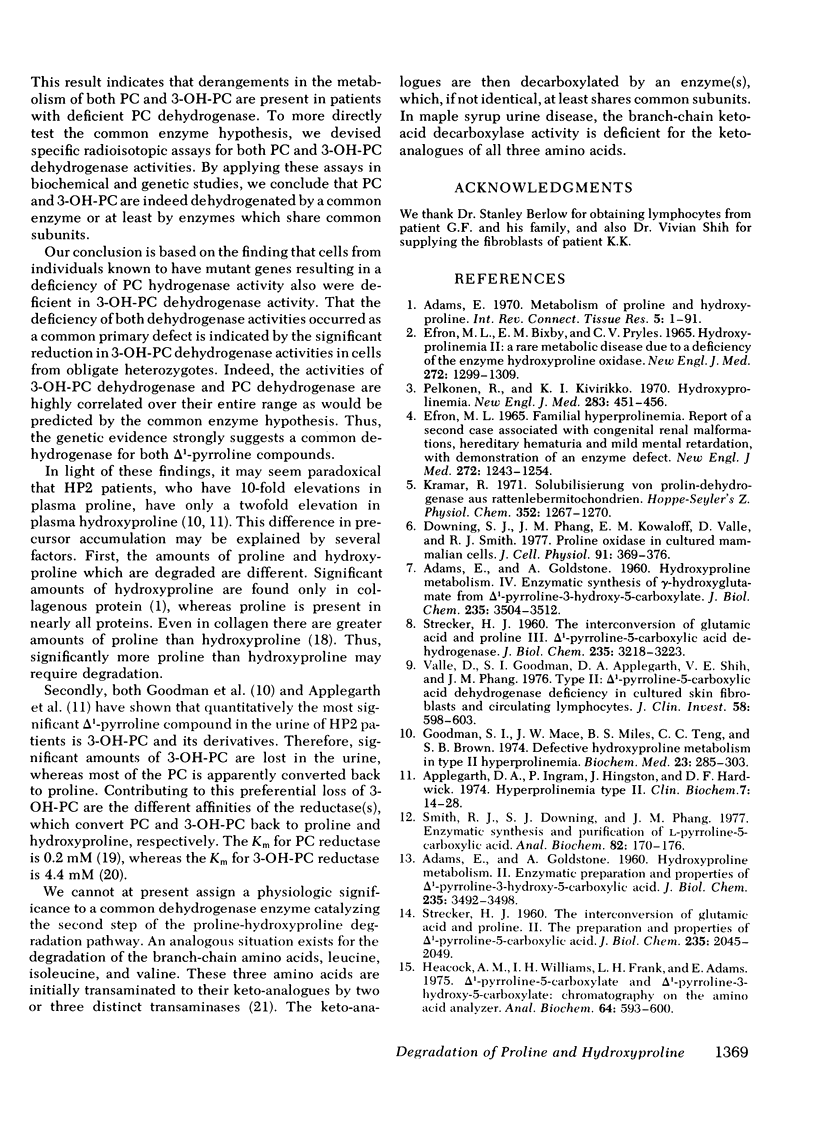
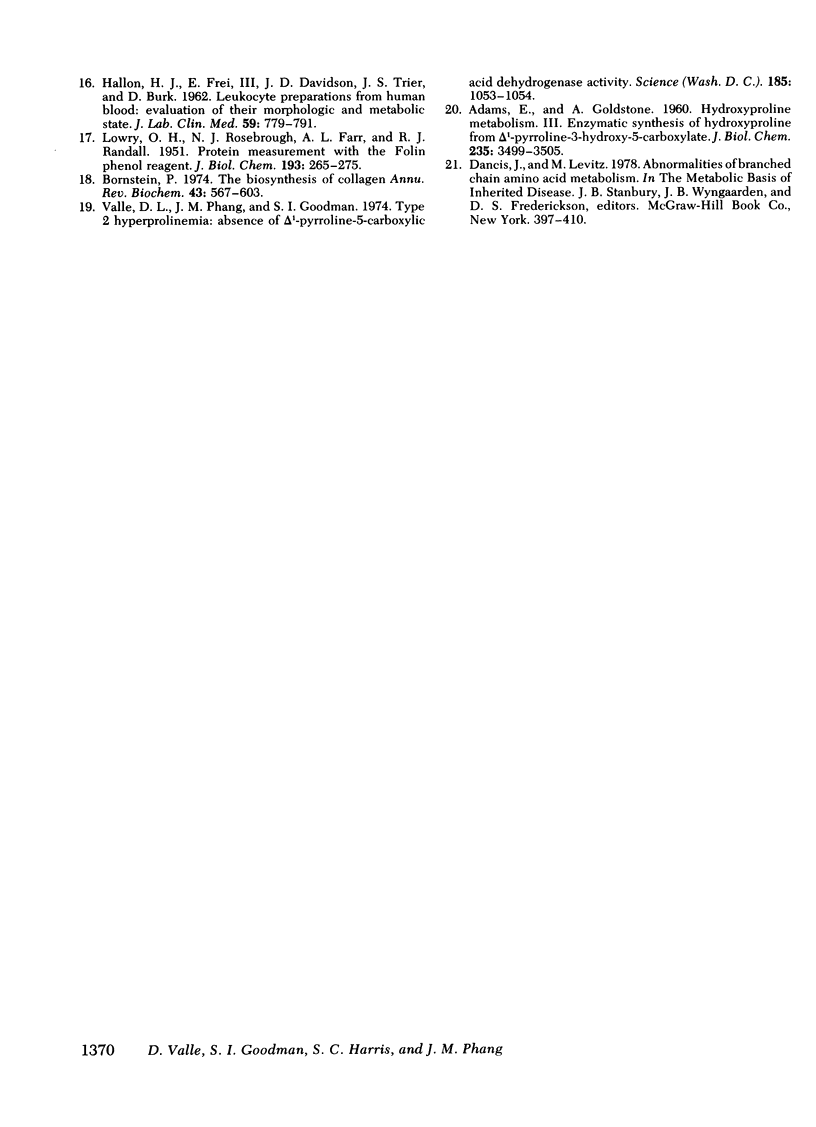
Selected References
These references are in PubMed. This may not be the complete list of references from this article.
- ADAMS E., GOLDSTONE A. Hydroxyproline metabolism. II. Enzymatic preparation and properties of Delta 1-pyrroline-3-hydroxy-5-carboxylic acid. J Biol Chem. 1960 Dec;235:3492–3498. [PubMed] [Google Scholar]
- ADAMS E., GOLDSTONE A. Hydroxyproline metabolism. III. Enzymatic synthesis of hydroxyproline from Delta 1-pyrroline-3-hydroxy-5-carboxylate. J Biol Chem. 1960 Dec;235:3499–3503. [PubMed] [Google Scholar]
- ADAMS E., GOLDSTONE A. Hydroxyproline metabolism. IV. Enzymatic synthesis of gamma-hydroxyglutamate from Delta 1-pyrroline-3-hydroxy-5-carboxylate. J Biol Chem. 1960 Dec;235:3504–3512. [PubMed] [Google Scholar]
- Adams E. Metabolism of proline and of hydroxyproline. Int Rev Connect Tissue Res. 1970;5:1–91. doi: 10.1016/b978-0-12-363705-5.50007-5. [DOI] [PubMed] [Google Scholar]
- Applegarth D. A., Ingram P., Hingston J., Hardwick D. F. Hyperprolinemia type II. Clin Biochem. 1974 Mar;7(1):14–28. doi: 10.1016/s0009-9120(74)90174-x. [DOI] [PubMed] [Google Scholar]
- Bornstein P. The biosynthesis of collagen. Annu Rev Biochem. 1974;43(0):567–603. doi: 10.1146/annurev.bi.43.070174.003031. [DOI] [PubMed] [Google Scholar]
- Downing S. J., Phang J. M., Kowaloff E. M., Valle D., Smith R. J. Proline oxidase in cultured mammalian cells. J Cell Physiol. 1977 Jun;91(3):369–376. doi: 10.1002/jcp.1040910306. [DOI] [PubMed] [Google Scholar]
- EFRON M. L., BIXBY E. M., PRYLES C. V. HYDROXYPROLINEMIA. II. A RARE METABOLIC DISEASE DUE TO A DEFICIENCY OF THE ENZYME "HYDROXYPROLINE OXIDASE". N Engl J Med. 1965 Jun 24;272:1299–1309. doi: 10.1056/NEJM196506242722501. [DOI] [PubMed] [Google Scholar]
- EFRON M. L. FAMILIAL HYPERPROLINEMIA. REPORT OF A SECOND CASE, ASSOCIATED WITH CONGENITAL RENAL MALFORMATIONS, HEREDITARY HEMATURIA AND MILD MENTAL RETARDATION, WITH DEMONSTRATION OF AN ENZYME DEFECT. N Engl J Med. 1965 Jun 17;272:1243–1254. doi: 10.1056/NEJM196506172722401. [DOI] [PubMed] [Google Scholar]
- FALLON H. J., FREI E., 3rd, DAVIDSON J. D., TRIER J. S., BURK D. Leukocyte preparations from human blood: evaluation of their morphologic and metabolic state. J Lab Clin Med. 1962 May;59:779–791. [PubMed] [Google Scholar]
- Heacock A. M., Williams I. H., Frank L. H., Adams E. Delta-1-pyrroline-5-carboxylate and delta-1-pyrroline-3-hydroxy-5-carboxylate: chromatography on the amino acid analyzer. Anal Biochem. 1975 Apr;64(2):593–600. doi: 10.1016/0003-2697(75)90472-8. [DOI] [PubMed] [Google Scholar]
- Kramar R. Solubilisierung von Prolin-Dehydrogenase aus Rattenleber-mitochondrien. Hoppe Seylers Z Physiol Chem. 1971 Sep;352(9):1267–1270. [PubMed] [Google Scholar]
- LOWRY O. H., ROSEBROUGH N. J., FARR A. L., RANDALL R. J. Protein measurement with the Folin phenol reagent. J Biol Chem. 1951 Nov;193(1):265–275. [PubMed] [Google Scholar]
- Pelkonen R., Kivirikko K. I. Hydroxyprolinemia: an apparently harmless familial metabolic disorder. N Engl J Med. 1970 Aug 27;283(9):451–456. doi: 10.1056/NEJM197008272830903. [DOI] [PubMed] [Google Scholar]
- STRECKER H. J. The interconversion of glutamic acid and proline. II. The preparation and properties of delta 1-pyrroline-5-carboxylic acid. J Biol Chem. 1960 Jul;235:2045–2050. [PubMed] [Google Scholar]
- Smith R. J., Downing S. J., Phang J. M. Enzymatic synthesis and purification of L-pyrroline-5-carboxylic acid. Anal Biochem. 1977 Sep;82(1):170–176. doi: 10.1016/0003-2697(77)90145-2. [DOI] [PubMed] [Google Scholar]
- Valle D. L., Phang J. M., Goodman S. I. Type 2 hyperprolinemia: absence of delta1-pyrroline-5-carboxylic acid dehydrogenase activity. Science. 1974 Sep 20;185(4156):1053–1054. doi: 10.1126/science.185.4156.1053. [DOI] [PubMed] [Google Scholar]
- Valle D., Goodman S. I., Applegarth D. A., Shih V. E., Phang J. M. Type II hyperprolinemia. Delta1-pyrroline-5-carboxylic acid dehydrogenase deficiency in cultured skin fibroblasts and circulating lymphocytes. J Clin Invest. 1976 Sep;58(3):598–603. doi: 10.1172/JCI108506. [DOI] [PMC free article] [PubMed] [Google Scholar]


